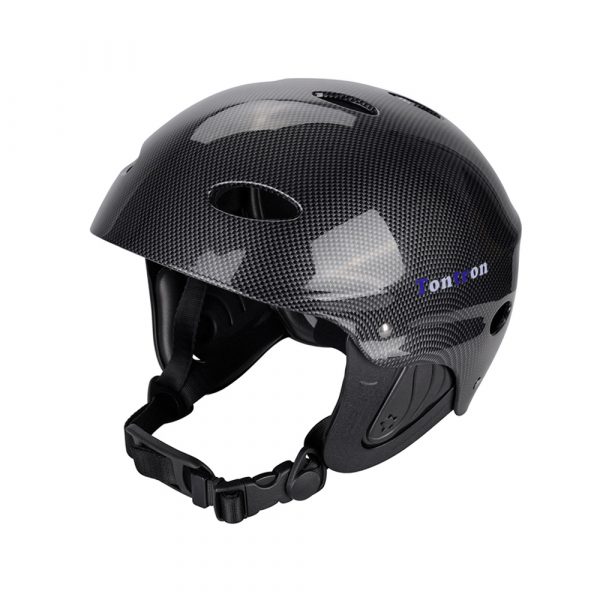One of the most important articles of kayak gear a whitewater kayaker will buy is a whitewater kayaking helmet. While most kayak helmets are purchased based on price or on style, very few are bought due to their features. The first step in knowing what to look for in a kayak helmet is knowing the parts that make them up. A kayaking helmet is basically constructed of three parts:
Shell
The outer shell is the hard part of the kayak helmet that is seen by the outside world. The shell will be the surface that comes into contact with the river bottom should you flip over in shallow water.
A harder outer shell will distribute the force of the impact to a larger area of the helmet. This will lessen the effect of the force on any one concentrated area. The downside of a harder shell is that it doesn’t absorb the impact as well as a more flexible shell. A softer or more flexible shell helps to absorb the impact but it is also much easier to break or be pierced during a sharp impact.
Lining
The inner lining is on the inside of the helmet. This is the barrier that actually comes into contact with your head. The lining will absorb the blow that is transmitted through the shell and will keep your scull protected.
Some helmets have linings that are made of two different-density foams. The foam against the shell aids in distributing the impact and the layer against the kayaker’s head is softer for maximum comfort.
Strap System
The strap system for a kayak helmet consists of the straps, the buckle, and the adjustment mechanism. They all work together with one goal in mind, to keep the helmet snuggly and comfortably on the kayaker’s head.
The straps attach to the helmet and come down around the paddler’s throat. There may be adjustment points around the ears to ensure the straps are in the correct position for a custom fit on the paddler’s head. Finally, the buckle, usually plastic, is attached either below the throat or on the side of the jaw, depending on the model.
Of course, these are just the basics, but it is important to know there are options out there, even for kayak helmets.

